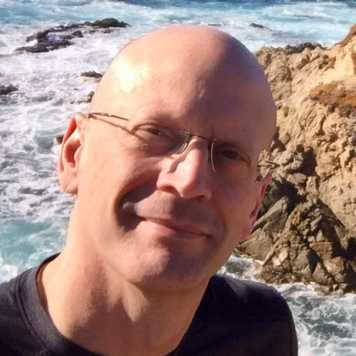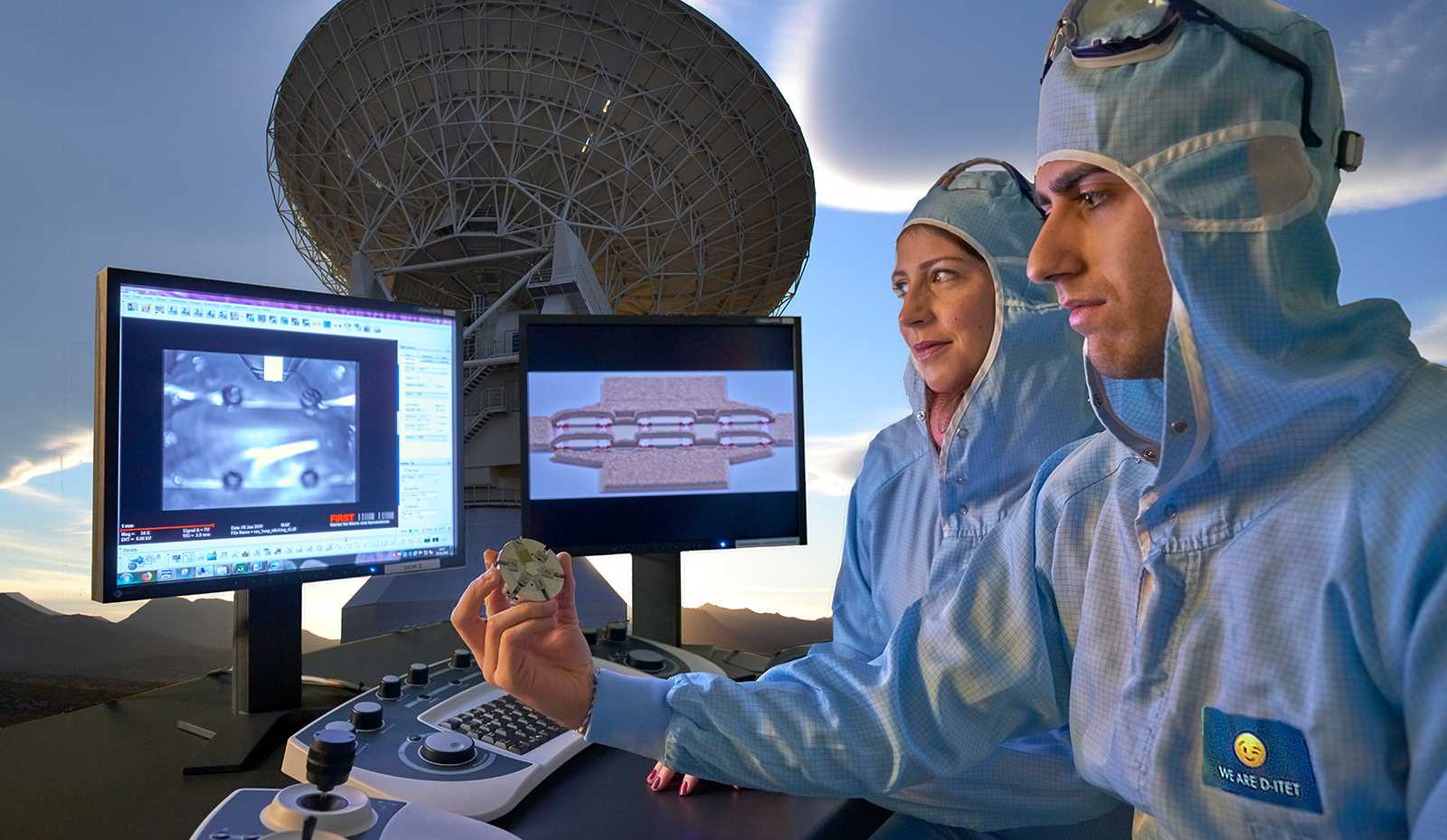"I have always been fascinated by speed"
Prof. Colombo Bolognesi, leader of the Millimeter-Wave Electronics Laboratory (MWE) group, explains in our new portrait series his research focus, what made him interested in ultrahigh-speed compound semiconductor transistors and how his "super-low-noise" transistors play a crucial role in space exploration by the European Space Agency (ESA).
Prof. Bolognesi, what is your main research area?

Our main field is ultrahigh-speed compound semiconductor transistors. We are talking about devices that can work at frequencies of several hundreds of GHz. To put that in perspective, for example, your cellphone transmits largely below 2-6 GHz.
What are compound semiconductors and what are their main domains of application?
Compound semiconductors are man-made or synthetic semiconductors, created by combining certain chemical elements. They are to be contrasted with elemental semiconductors, such as silicon or germanium, which are found in nature.
Today, such transistors are utilised in high-capacity telecommunications networks, e.g. optical fiber networks and the upcoming 5G and 6G networks everyone hears about. More bandwidth is available to enable higher data rates and at higher carrier frequencies, so it becomes necessary to develop faster devices that enable circuits to operate at higher frequencies. For example, 5G networks will add capability around 30 GHz to permit very fast data rates over short distances. As a matter of fact, the research of my PhD supervisor Herbert Kroemer basically helped shape the backbone of the internet and enabled today`s information society. In the year 2000 he received a 1/4th share of the Physics Nobel Prize.
Another domain of application for our devices is found in Deep Space Communications: Our devices developed under ESA (European Space Agency) funding are recognised as some of the best in the world, and are used in ESA ground stations to receive deep space probe data for missions as far as Mars.

“The interesting thing about compound semiconductors is that one can modify their properties by changing their composition. By this, we can create tailor-made semiconductors transistors for our applications. ”Prof. Colombo Bolognesi
What brought you to this research area? What fascinated you?
I liked the physical sciences in school so I chose Electrical Engineering (EE) as a means to apply them practically. The EE curriculum is complex, and things are often not taught in the proper order – it is a difficult optimisation problem. It often turns out that semiconductor devices are introduced in basic circuit courses without being well explained, leaving students disoriented and confused. It was the case in my first year at university as well.
I tried to read on my own with little success, because I did not have the right physics pre-requisites at the time. After taking the Modern Physics requisite course, I eventually took the semiconductor course in the second year, and I was thrilled to be exposed to these concepts. When you dig deeper, you find the entire framework rests on some beautiful physics… beautiful and useful. The reason semiconductors work the way they do, is because a direct manifestation of Quantum Mechanics.
In EE there can be a lot of high-level work, like systems where things are described by block diagrams with a given input/output response function, and it can be very "black-box like". I found myself attracted to the insides of the box, where the action is all taking place at the level of moving electrons in the electronic components.
“The interest in fast components naturally followed from the fact that as a youth I was interested in various expressions of speed: I had hoped to be a fighter pilot or a hockey player (neither happened), and I had an interest in fast vehicles.”Prof. Colombo Bolognesi
What is the impact of your research on society?
The fact that our transistors are widely used, especially our "super-low-noise" devices by ESA, is very rewarding. Our technology also helps people to watch movies on a train, which might not sound so fundamental. It is the same technology, though, that is used in networks like 5G, which will enable autonomous vehicles and tele-medicine, e.g. for remote surgery. However, I am not certain that all such developments are desirable, as they tend to make humans lose capabilities by constantly deferring to technology, e.g. not knowing how to read a map any longer.
What are currently the most challenging issues in your research field?
One of the issues is that the devices are so fast that it becomes challenging to measure them reliably because the test equipment is based on slower electronic components. In our space electronics projects, the transistor noise is so low that it is extremely difficult to characterize. Furthermore, transistor performance has become so good that the models that have guided work their evolution/design over the last decades fail. Next, one would like to build circuits based on such devices. But as frequencies rise, the situation becomes very complicated electromagnetically. Several steps need to be taken requiring a heavy infrastructure, which exists only in a few places around the world.
Are you collaborating with other people at D-ITET?
Yes, occasionally. I currently have an interesting project with Prof. Mathieu Luisier where he simulates the performance of our transistors from first principles trying to understand better the factors that limit their performances. I also have collaborations with the Ferdinand-Braun-Institut in Berlin and the University of Duisburg.
How do you like ETH as a research institution?
I have been working at ETH since 2006! The major research platforms such as FIRST Laboratory, the BRNC cleanroom and the Center for Microscopy enable world-class research opportunities.
How international is your group? Are you currently looking for doctoral students?
My group is very international! I came to ETH with three of my Chinese students from Vancouver, so upon arrival I instantly quadrupled the Chinese density on our floor. I have or had people from the United States, Germany, India, Iran, Italy, Russia, Serbia, Spain, Sweden, Ukraine and a couple of Germans and Swiss as well, not too surprising in high technology. Perhaps more unusual is that half my Group is female – through no particular design - it just is. RecentIy, I was very happy to be able to employ a female PhD student from Iran.
How will your field develop over the next years/decades?
We are trying to give an orientation where we can develop circuit demonstrators. Certain incumbent technologies may offer circuit blocks, but it would be more convincing if we demonstrated better performances with our advanced transistors. The bar for acceptance of a new technology keeps getting higher. This is a challenge, which we can hopefully turn into an opportunity.
Professors at D-ITET
In our interview series, professors at D-ITET give an insight into their research and personal motivation to go into academia.
Lectures
Prof. Colombo Bolognesi teaches a course on "Semiconductor Devices" for Bachelor’s students in the 4th semester in spring and a course on "High-Speed Signal Propagation" for Master’s students in the fall semester.
More information at mwe.ee.ethz.ch
